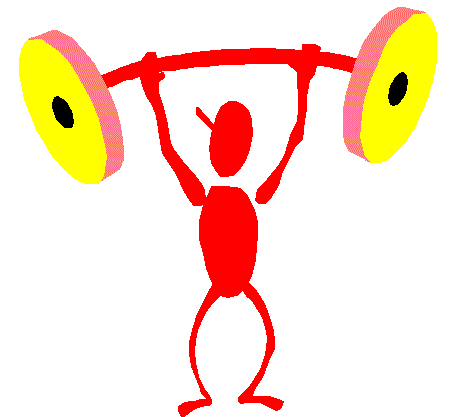|
..........
|
.
MEASURING
STRENGTH or CAPACITY
of a Community, Family or
Organization |
.

.
| Here we want to measure
the strength, capacity or power of a community, family or organisation,
and will use sixteen variables that contribute to that strength.
The sixteen elements and brief descriptions of them are described in Sixteen
Elements. |
.
| The more any community
or organisation has of each of those elements, the stronger it is, the
more capacity it has, and the more empowered it is. A community is a social
entity; it does not become stronger simply by adding a few more facilities.
Community strengthening or capacity building involves social change ––
development ––
and that, in turn, involves all sixteen of the elements of strength. |
.
| Difficulties
of Measurement: |
....
| Changing levels of
strength can not accurately be measured by a researcher devising a questionnaire.
They could be better observed and verified by a discussion led by a facilitator
who calls for the observations of all community members in a meeting, asking
how much each of the above has changed. Monitoring the physical construction
of a clinic is relatively easy; they can report, for example, that construction
has reached the foundation level or wall level. Monitoring the changing
strength of a community, in contrast, means performing a sociological measurement
of the changing social characteristics of the community. |
.
| A lab technician can
stick a thermometer into a patient to obtain a reading of temperature,
and that will yield very different results than when a doctor asks the
patient, "How do you feel?" and allows the patient to respond. The patient
does not have to understand the principles of a thermometer, but does have
to understand the question by the doctor. Unfortunately, in sociology,
questionnaires are far less objective or accurate than thermometers because
most respondents, and many interviewers, do not understand the nature or
purpose of the questions, or what they are trying to measure, and there
are no universally accepted standards of measurements as there are for
temperature. |
.
| That means that the
community members must be made aware of the goal of strengthening and the
elements of strengthening (as well as their immediate objectives of constructing
the facility), and these can not be kept only by the researchers. It is
important for the community to participate in evaluating its own strengthening,
that it be made aware of the elements of strengthening. The facilitator
must therefore explain these elements during a process of community self
monitoring its own capacity increases. |
.
| Participatory
Measurement: |
....
| It is important for
the community itself to be part of the process of measuring strength and
evaluating any increase in strength. When it builds a clinic, it has a
limited or finite objective, and it is easy to see the point at which the
clinic construction is completed. In measuring strength or capacity of
the community itself, the goal is open ended; there is no definable finite
end to the process. The community itself (its members in a group meeting,
not just a few factions or influential individuals) must be the main source
of assessing if there has been an increase in strength, which (if any)
of the above elements contribute to that strengthening, and if it is still
desired by the community. The methods of tapping community observations,
must differ between the monitoring of the construction of a facility versus
monitoring the strengthening of the community which constructed it. |
.
| The mobilisers who
organised the community to engage in its self help activity, did so by
taking a "facilitating, not provision" approach. That approach, bringing
together the whole community in public decision making meetings, appears
to be the most useful method also of monitoring the increasing strength
of the community. Facilitating the monitoring can be done by the same mobilisers,
or by others familiar with the community and its history. Ideally, the
community as a whole will meet annually, and be led by the same facilitator.
The facilitator will list all the elements of strengthening, explaining
any that need explaining. They will then discuss the degree that the community
has changed since the last year's evaluation meeting. A written record
of the discussion will provide information to be interpreted as indicators
of the amount of strengthening since the previous such discussion. |
.
| In the real world,
facilitators change, community members come and go, not everyone in a community
can attend a meeting, total participation is not possible, and the very
changes that take place in the community affect the perceptions and values
of members. It is to be expected that in the very early stages, for example,
the community members are aware of their poverty and see the acquisition
of resources from donors outside the community as the sole means of alleviating
poverty. At later stages, as the community members gain confidence by successfully
engaging in self help activities, they would not necessarily diminish the
desire for outside donations, but would also see the value of making decisions
within the community, and identifying and using available resources from
within the community. |
.
| The mobilising techniques start with
unity organising, asking what are the priority problems, writing responses
on the board with no criticism allowed, and when consensus is reached the
facilitator changes the "problem" into the priority "goal" of the community. |
.
....
| To initiate a community
based monitoring of the strengthening process, there should be a facilitator,
a recorder, and a community meeting. The facilitator can start with procedures
similar to the ones used in mobilising the community members. |
.
| Similarly, during a
community monitoring session, a facilitator describes the above elements
of community strengthening then, element by element, with a blackboard
or sheets of newsprint on a wall, asks members of the community to indicate
the degree of change, and writes their responses on the board. The facilitator
asks which of the elements have changed the most, and which the least,
and why. Every item is written on the board by the facilitator, and the
recorder writes them down in a notebook, including any details that might
be missed on the board. The responses are moved on the board to indicate
which elements changed most and which least. |
.
| The facilitator aims
at consensus among the members in making the assessment. If there have
been more than one session in the past, the meeting might then go on to
see if the rate of change was greater in the previous phase or the immediate
past phase. Ensure that all members of the meeting are aware of the meanings
of every one of the elements of strengthening. A report of the meeting
should be prepared, a first draft the very same day. It should be reviewed
by both the recorder and the facilitator. If there is time, the facilitator
can show it to some selected members of the community to cross check. |
.
| The report should list
each of the above elements, and the comments (in narrative form) by community
members against each one. You will see that it is difficult to measure
degree of change, but there will be several variations of interpretation
in the nature of the changes, as observed by the community members. Hold
a community meeting (annually) similar to mobilisation meeting. Facilitator
uses adapted brainstorming facilitation techniques. Recorder records all
details of suggestions while facilitator marks main notes on the board. |
.
| Ask for group consensus
after explaining each element: (1) relative strength at present; (2) change
over the last twelve months; and (3) change over the previous four or five
years. |
.
| Allow for different
interpretations, then aim for group consensus. Invite shy and humble persons
to speak up. Record the main points on the board while the recorder writes
details. |
.
| To make the process
easier, you may wish to use the handout, Form
for Measuring Empowerment, where the participants can first fill in
their estimates of strength before you combine their estimates in a group
session. The form also has a section where literate participants may note,
in their own words, the factors contributing to their estimates of each
element. This may be read over carefully after the session. |
––»«––
|



